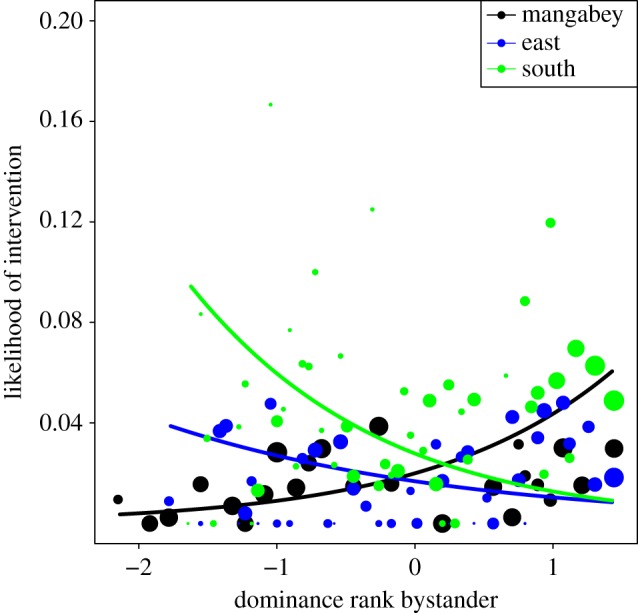Figure 1.

The probability of the bystander to intervene depending on the effects of the interaction of bystander rank (z-standardized, original mean = 0.614, s.d. = 0.263) with group identity (model 1.1). Higher values on the x-axis depict high bystander ranks. Mangabeys (black) show a significant positive effect with increasing rank, while south (green) shows a significant negative effect, and east showed no effect. Shown are the observed probabilities to intervene into a grooming bout of average duration (larger point areas (range 1–639 observations) denote a larger number of observations) as well as the model results (lines).
